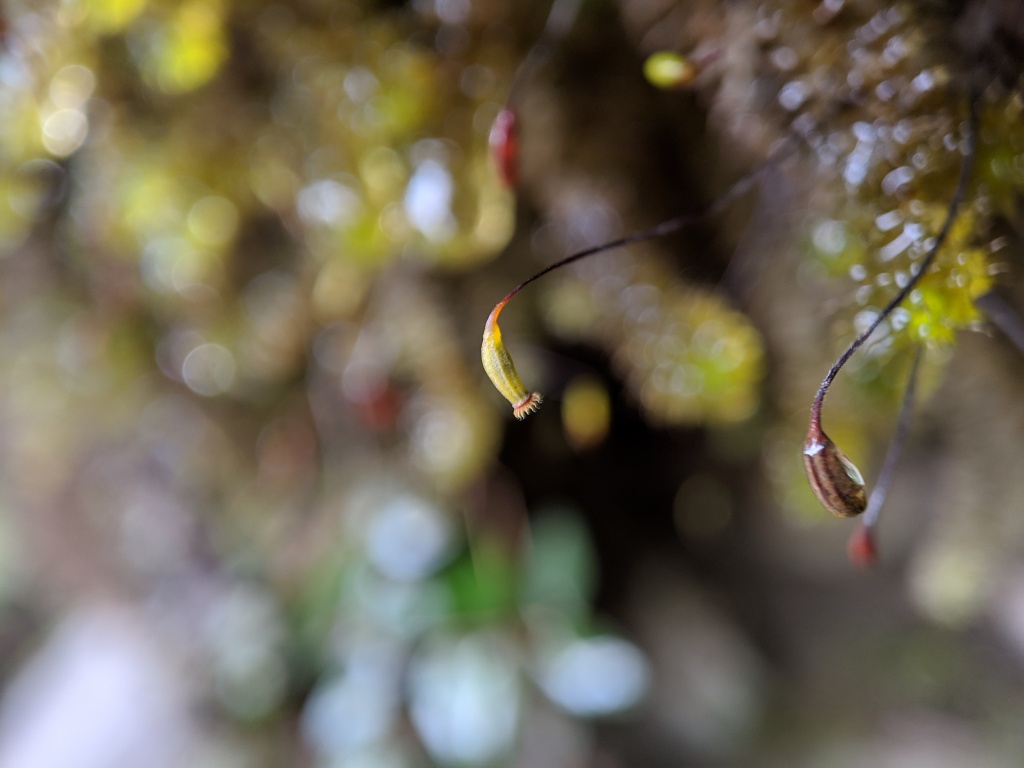Ptychomnion aciculare
(Brid.) Mitt.Phyllodioicous. Loose turfs on soil, logs or epiphytic. Stems to 12 cm long, simple to sparingly branched, red-brown, with brown tomentum of rhizoids restricted to base. Leaves squarrose, little altered with papery texture when dry, broadly ovate to broadly elliptic, 2–4.5 (–5) mm long, 1.2–2.5 mm wide, shallowly cochleate, with a few weak plications at base to 25–33% of leaf length; costa usually indistinct, short and double; apex acuminate and twisted; margins serrate in acumen, otherwise entire, plane, without a border; laminal cells linear or rectangular, 25–50 (–70) μm long, 5–13 μm wide, shortest near apex; alar cells slightly shorter, poorly differentiated. Setae 20–30 mm long, dark red, smooth, not distinctly twisted. Capsules inclined to pendent, cylindric to ovoid, 3–4.5 mm long, curved, 8-ribbed, brown. Operculum long-rostrate, 3–4.5 mm long.
GleP, VVP, GipP, OtP, WaP, Gold, CVU, GGr, DunT, EGL, EGU, WPro, HSF, HNF, OtR, Strz, MonT, HFE, VAlp. Also SA, QLD, NSW and Tas. New Zealand, throughout the Pacific and southern South America. Widespread and common along and south of the Great Dividing Range in moist or wet sites in a variety of habitats including rainforest, margins of swamps, near creeks in sclerophyll forest and among rocks in more open areas.
 Spinning
Spinning

